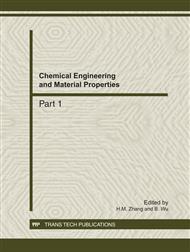p.629
p.633
p.638
p.642
p.648
p.654
p.661
p.666
p.672
Understanding the Effect of the Preparation Process on the Electrochemical Properties of 0.25Li2MnO3∙0.75LiNi1/2Mn1/2O2 by Rietveld Refinement Method
Abstract:
0.25Li2MnO3•0.75LiNi1/2Mn1/2O2 solid solution was prepared via a two-step calcination technique. No appreciable difference between the end products can be detected from the X-ray diffraction patterns including the superstructure reflections. However, the material prepared from preheating the precursor at 450°C for 4h in N2 delivers a high first charge capacity of 287mAhg-1 between 2.5and 4.8V at 0.5C, while the samples obtained from preheating the precursor for 10h in air exhibit a low capacity of 199 mAhg-1 and an undetectable plateau around 4.5V in the initial charge curve. With an aim to identify the influence of preparation process on the structural and electrochemical properties, Rietveld refinement method was performed on the detailed structure testing with the model integrating R m layered rock salts and Fd m cubic ones. The end products prepared from precalcining the precursor in N2 shows low proportion of Fd m domain about 8.0% and larger Li-O slab space in dominating R m rock salts. By contrast, the samples obtained from prolonging the process-prheating time to 10h in air consists of 12.7% Fd m cubic rock salts and 87.3% R m layered ones. The observations indicate that the samples obtained from different precursor-preheating process appear a variation in the local environment of Li+ insertion/extraction, which give an evidence on their electrochemical lithiation/delithiation process shown in the CV curves.
Info:
Periodical:
Pages:
648-653
Citation:
Online since:
December 2011
Authors:
Price:
Сopyright:
© 2012 Trans Tech Publications Ltd. All Rights Reserved
Share:
Citation:


